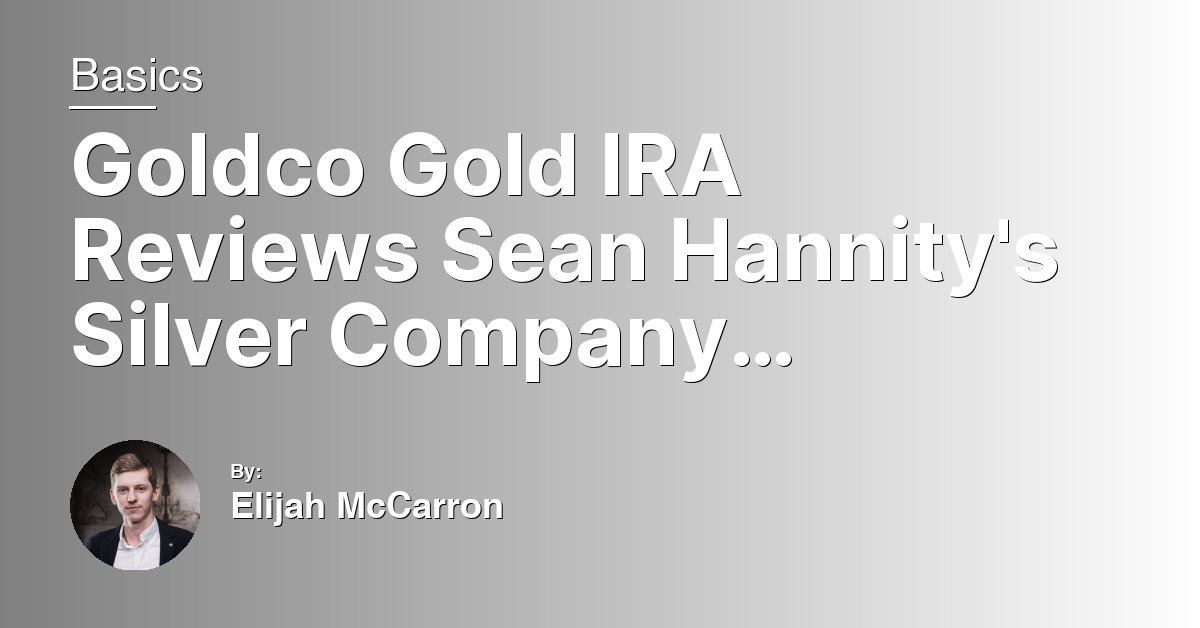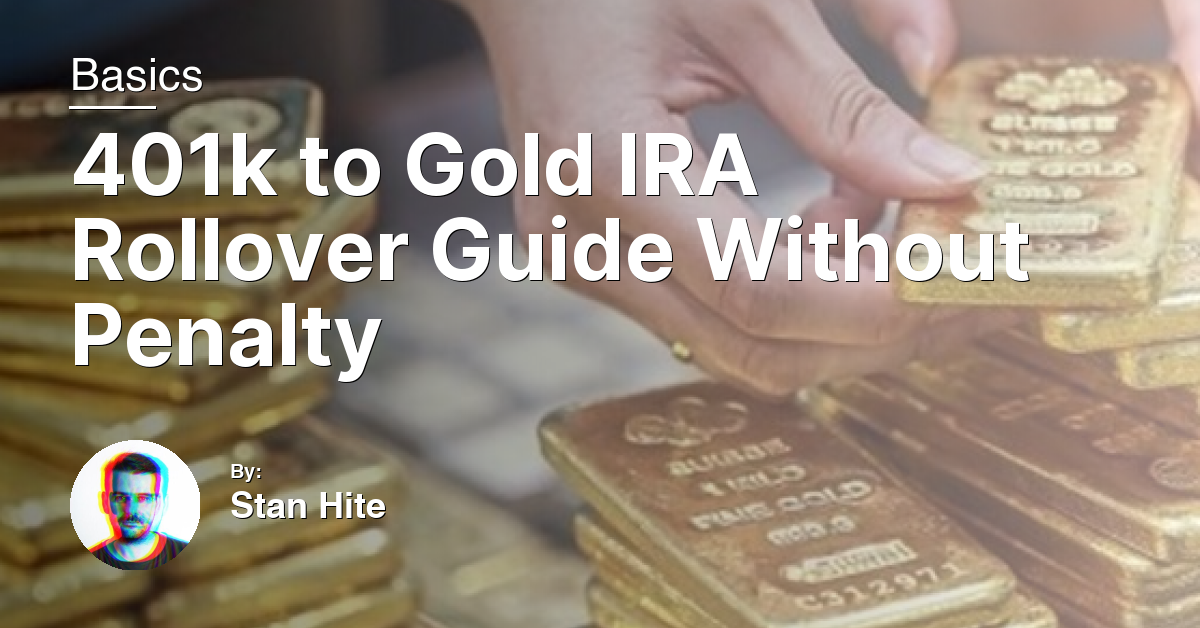In an era where financial security feels increasingly elusive, diversifying your retirement portfolio could be the key to a worry-free future. Our comprehensive guide on transitioning from a traditional 401k to a Gold IRA without incurring penalties offers a strategic pathway for those looking to safeguard their retirement savings with the timeless value of gold. Discover the steps, benefits, and considerations involved in making this significant yet potentially rewarding move.
Understanding Gold IRAs
When moving your 401(k) to a Gold IRA, it’s crucial to execute a direct rollover to avoid income tax penalties. This process involves the transfer of funds from your existing retirement account directly into your new Gold IRA, ensuring the transaction is not considered a taxable distribution. Consulting with a financial adviser is advisable to navigate the complexities of this transition, ensuring compliance with IRS regulations and maximizing tax advantages.
Additionally, conducting due diligence on potential Gold IRA providers is essential. Consider their fees, the liquidity of their offered metals, and any insurance or storage solutions they provide. This careful planning and selection can significantly impact the long-term growth and security of your retirement assets.
The Basics of a 401(k)
A 401(k) is a tax-advantaged retirement savings plan sponsored by an employer. It allows workers to save and invest a portion of their paycheck before taxes are taken out. Taxes aren’t paid until the money is withdrawn from the account. This setup provides an immediate tax advantage and the potential for your investments to grow tax-deferred.
Diversification is crucial in managing risk and enhancing potential returns over time. Including precious metals like gold in your 401(k) can serve as a hedge against inflation and currency depreciation, as well as diversify your investment portfolio. Gold has historically maintained its value over the long term, offering a stable investment in times of economic uncertainty, such as the 2007–2008 financial crisis.
To move a 401(k) to a Gold IRA without penalty, it’s essential to conduct due diligence and consult with a financial adviser. This transition can offer the benefits of both a traditional retirement account and the security and inflation hedge of precious metals.
Direct vs. Indirect Rollovers
When considering a 401(k) to Gold IRA rollover, it’s essential to understand the difference between direct and indirect rollovers. A direct rollover involves the transfer of funds from your 401(k) directly to your Gold IRA without the money passing through your hands. This method is preferred for its simplicity and because it avoids immediate tax penalties, ensuring the continuity of your investment’s tax-advantaged status.
In contrast, an indirect rollover means the funds are first paid to you and then you have 60 days to deposit these funds into your Gold IRA. While this offers temporary access to your money, it comes with risks. If you fail to complete the transfer within 60 days, you could face substantial income tax implications and potential early withdrawal penalties.
Direct rollovers are generally smoother, maintaining your portfolio’s diversification and hedging capabilities without incurring unnecessary fees or taxes. They help investors smoothly transition their retirement savings into precious metals like gold, silver, platinum, and palladium, providing a hedge against market volatility and currency depreciation. Indirect rollovers, though offering a brief liquidity window, carry significant risk and potential financial consequences if not managed with precision.
The Pros of Gold Investing
Investing in gold via a 401(k) to Gold IRA rollover offers numerous advantages. First, gold is a powerful tool for portfolio diversification, allowing investors to mitigate risks associated with stock market volatility. Unlike stocks and bonds, gold often moves inversely to the market, providing a hedge during economic downturns, similar to the 2007–2008 financial crisis.
Gold’s intrinsic value as a precious metal offers a level of security unmatched by many other financial assets. Its historical performance as a store of wealth and hedge against inflation and currency depreciation makes it an attractive asset for long-term investment strategies.
Moreover, transitioning from a 401(k) to a Gold IRA can be done without incurring income tax penalties, preserving more of your wealth for retirement. This tax advantage, coupled with gold’s market liquidity, allows investors to buy or sell assets with minimal impact on the price, ensuring assets can be liquidated when needed.
Lastly, including metals like silver, platinum, and palladium alongside gold in your IRA further diversifies your retirement savings, potentially enhancing returns and offering additional protection against economic uncertainties.
Tax Considerations for Gold Investments
When rolling your 401(k) into a Gold IRA, understanding the tax implications is crucial to avoid penalties and maximize your investment. Gold, as a tangible asset, offers a hedge against inflation and currency depreciation, making it a valuable addition to your retirement portfolio for diversification.
However, it’s important to note that the IRS treats gold investments within an IRA differently than traditional stocks or bonds. When you sell gold for a profit in an IRA, the gains are not taxed as capital gains but as ordinary income at your current tax rate upon withdrawal. This distinction is vital for planning your retirement and estimating future taxes.
Contributions to a Gold IRA are typically made with pre-tax dollars, allowing your investment to grow tax-deferred until you start taking distributions. Remember, early withdrawals before age 59½ may incur a 10% penalty in addition to income taxes, although there are exceptions for specific situations.
Lastly, always consider the storage fees and insurance costs associated with physical gold investments, as these can impact the overall return on your investment. By carefully planning and understanding these tax considerations, you can effectively incorporate gold into your retirement savings strategy.
Exploring Gold Mutual Funds and ETFs
Exploring Gold Mutual Funds and ETFs offers a strategic pathway for those looking to diversify their retirement portfolio, particularly through a 401(k) to Gold IRA rollover. Gold mutual funds invest in various gold mining companies, providing a less direct but diversified exposure to gold as an investment. These funds allow for easier liquidation and can act as a hedge against market volatility and inflation.
On the other hand, Gold ETFs (Exchange-Traded Funds) offer a more direct investment in gold, often tracking the price of actual gold itself or gold indices. ETFs combine the market liquidity of stocks with the stability of precious metals, making them an attractive option for those seeking to mitigate risk in their pension or retirement savings.
Both vehicles offer unique advantages in terms of diversification, fees, and ease of trading. When considering a rollover, it’s crucial to evaluate the fee structure, potential tax implications, and how these investments fit into your broader financial strategy. This careful assessment can ensure a smooth transition to a Gold IRA without incurring penalties, aligning with your investment goals and risk tolerance.
Self-Directed IRAs Explained
Self-Directed IRAs allow individuals to diversify their retirement portfolios beyond traditional stocks and bonds. By rolling over a 401(k) into a Gold IRA without penalty, investors can include precious metals like gold, silver, and platinum in their retirement planning. This not only provides a hedge against inflation but also benefits from the potential currency appreciation of these metals.
Gold, a popular investment choice, offers stability in times of economic uncertainty. Including gold and other precious metals in a Self-Directed IRA can protect against market volatility and enhance portfolio diversification.
It’s important to choose an IRS-approved depository for storing physical metals and to be mindful of the fees involved in the rollover process. Understanding the rules for income tax in the United States regarding distributions from a Gold IRA is crucial to avoid unintended penalties.
This strategy can be a valuable part of a well-rounded retirement planning approach, offering both security and potential growth.
401(k) Contribution Limits Update
For those looking to diversify their retirement portfolio through a 401(k) to Gold IRA rollover, understanding the updated contribution limits for 401(k) plans is crucial. As of the latest update, the IRS has set the 401(k) contribution limit to $20,500 for individuals under 50, with an additional catch-up contribution limit of $6,500 for those aged 50 and above.
This adjustment provides an opportunity for investors to further allocate resources towards precious metals like gold, recognized for their hedge against inflation and currency depreciation. By transferring funds from a 401(k) to a Gold IRA, investors can maintain the tax-deferred status of their retirement savings while potentially enhancing the diversification and stability of their portfolio.
Navigating Taxes on Gold
However, it’s essential to understand that holding gold as an investment in your IRA does come with specific tax considerations for the future. When you withdraw from your Gold IRA during retirement, the amount is taxed as ordinary income, based on your tax bracket at the time of withdrawal, not as a capital gain. This distinction is crucial for planning your retirement finances and ensuring you leverage the hedge against currency depreciation that gold offers without unexpected tax implications.
Selecting a custodian who understands the intricacies of precious metals investments and the associated tax regulations can help you manage this process smoothly. This will allow you to focus on the diversification and protection benefits that gold adds to your retirement portfolio, without worrying about complex tax issues.
Final Thoughts on Retirement Savings
Diversifying your retirement portfolio is essential for managing risk and ensuring financial stability. A 401(k) to Gold IRA rollover offers a unique opportunity to include precious metals, a historically stable hedge against inflation and currency fluctuations, in your retirement savings.
By moving part of your 401(k) into a Gold IRA, you’re not just investing in a physical asset; you’re also safeguarding your pension against the volatility of traditional financial assets like stocks, bonds, and mutual funds. Remember, the key to a healthy retirement portfolio is diversification.
There are no penalties for a direct rollover, but it’s crucial to understand the rules and potential fees involved. Working with a reputable custodian can help mitigate any concerns and ensure a smooth transition. Keep in mind, precious metals in an IRA must meet specific purity standards and be stored in a secure facility, adding an extra layer of protection for your retirement savings.
F.A.Q.
Can you roll over a 401k to gold?
You cannot directly roll over a 401k into gold. Instead, you must go through a process called a 401k to gold IRA rollover. This involves transferring funds from your 401k into a self-directed IRA account that allows for investing in physical gold.
Is gold a good 401k investment?
Gold can be a beneficial addition to a 401k investment portfolio as it can help safeguard wealth and mitigate risks from other volatile investments.
Can I cash out my 401k and buy gold?
You cannot cash out your 401(k) and buy gold directly within the account. You may need to rollover your 401(k) to an IRA or a different plan that allows gold investments.
Should I put my IRA into gold?
Putting your IRA into gold can be a way to protect your wealth, reduce investment volatility, and serve as a hedge in economic downturns. It may also provide a tax-efficient shelter for potential gains.

